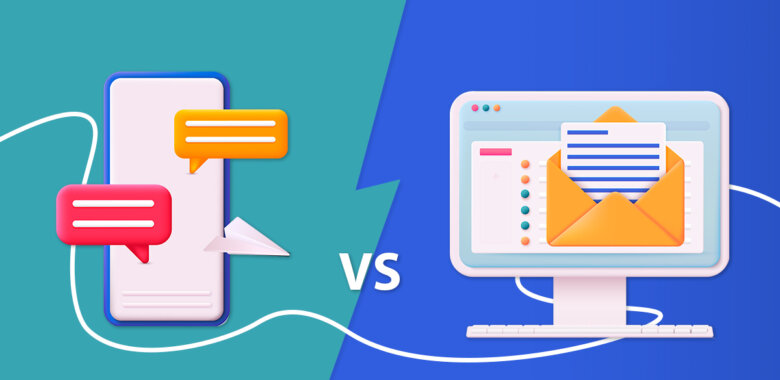SMS vs email marketing: advantages and disadvantages compared
To choose the right tool for your business, assess all the advantages and disadvantages of SMS and email marketing.
Pros and cons of SMS marketing
✅ In most cases, cell phones are at the fingertips of their owners and are used by most of the population. And that means readers will almost instantly view the message as soon as it is received. The information you want to tell your regular or potential client will be read minutes after sending.
✅ Your customers don’t need the internet to read a text message.
✅ Brevity is the sister of SMS marketing. In 2-3 sentences you can profitably describe your service or product and attract the customer. In the abundance of promotional materials that customers view daily, this point is particularly important in a marketing strategy. SMS messages are read quickly. The immediacy factor provides a greater response rate than most other media.
✅ Easy to send. You don’t need to prepare templates, develop a corporate style, or spend money on design and layout. Simply prepare the text of the message and send it.
❌ The limit of one message is only 160 characters, which isn’t always enough to fully describe the advertising offer. If the number of characters is exceeded, the cost of SMS increases.
❌ Mobile users rarely have a chance to unsubscribe from the SMS mailing list. This can be very annoying for the customers.
❌ No complex design, just text.
❌ With the vast amount of spam inundating people daily, your important messages may not be noticed and get the right reaction.
Pros and cons of email marketing
✅ 61% of consumers rely on email as their main form of communication when interacting with online brands — this leads to greater customer recognition and eventually higher conversion rates.
✅ Email lives longer: people can save it, mark it as important to come back to it later. Plus, with the long-term storage provided by email services and inbox search functions, people can always find messages when they need to.
✅ Low cost of sending emails.
✅ Ability to send several types of automated emails to interact with the audience (welcome emails, abandoned cart emails, etc.).
✅ Unlimited number of characters.
✅ Emails can be formatted differently thanks to layout options. You can add useful content (video, audio, photo) to the email to engage readers and a logo to build brand awareness.
✅ Ability for users to unsubscribe from the newsletter. This helps maintain the trust of the customers and avoid any potential legal issues that may arise when sending unsolicited emails.
❌ Email marketing can be a source of frustration due to its lower click-through and open rates. With an overflowing inbox, it’s increasingly difficult for your emails to stand out.
❌ Customers loathe receiving generic emails from huge lists. Marketers will need to pay a lot of attention to personalizing emails to ensure that customers don’t perceive them as spam.
❌ Even perfectly fine campaigns can trigger spam filters which can be unpredictable.
















